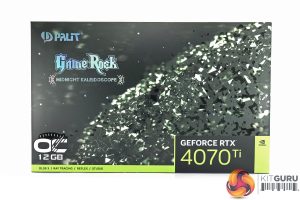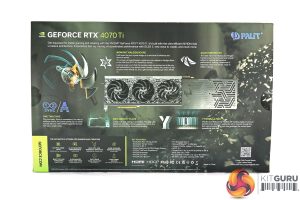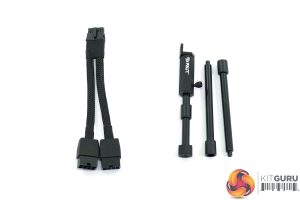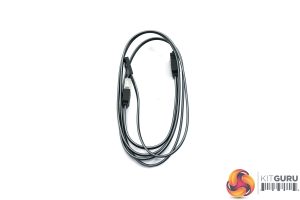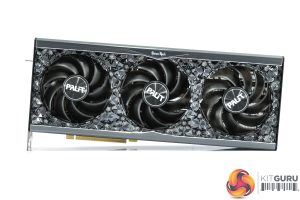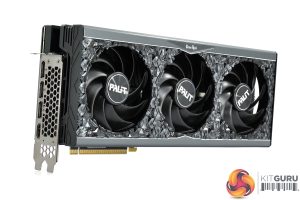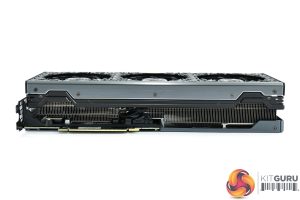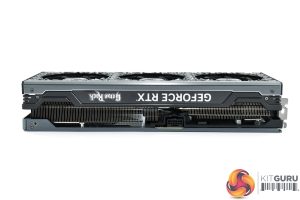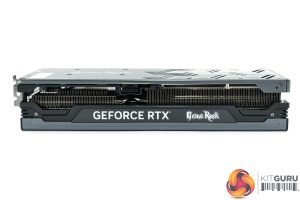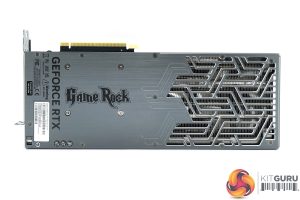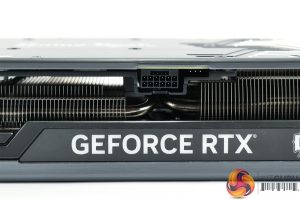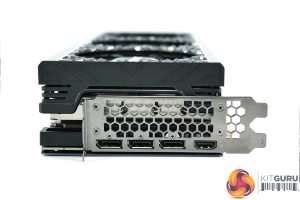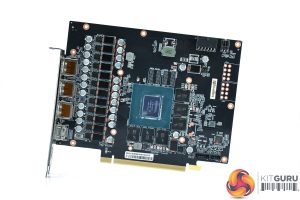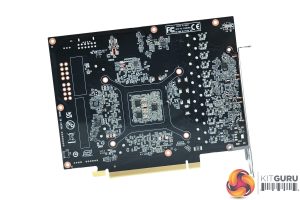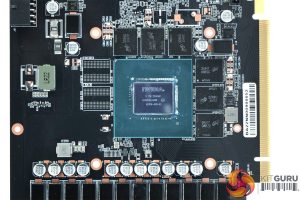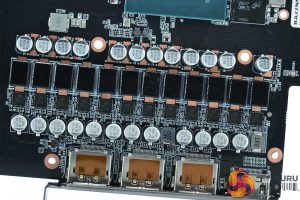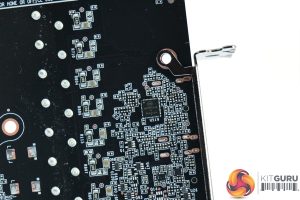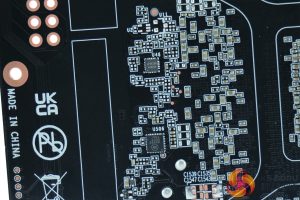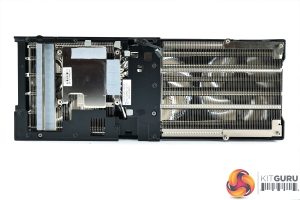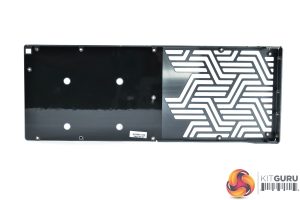The Palit RTX 4070 Ti GameRock OC ships in a dark box, with an eye-catching crystal-like pattern on the front. On the back, Palit highlights a few key features of the card and the cooler design.
Inside, we find a dual 8-pin power adapter, an ARGB cable used to synchronise the card's RGB lighting with your motherboard, and a height-adjustable GPU support bracket which screws into the side of the card to prevent GPU sag.
Looking at the card itself, the shroud and external design is almost identical to the both the RTX 4090 and RTX 4080 GameRock models we have already reviewed.
That means we find a black plastic shroud, but with two large brushed metal plates which add more of a premium feel. It's impossible to miss the ‘crystal' plastic RGB diffusers too, which occupy almost the whole of the front of the card.
We also get a look at the three 90mm fans, using Palit's ‘gale hunter' design, with a new ‘winglet fantail' that Palit claims helps to increase airflow concentration.
While the shroud design is effectively the same as the 4080 GameRock OC, the 4070 Ti model is a touch smaller. It measures in at 328.9 x 137.0 x 64.4 mm, so it's still a very large graphics card, but it's about 6mm thinner than the 4080 model. It also weighs in just under 1.6KG, so it's about 350g lighter than it's bigger brother.
Flipping the card over we get a look at the full-length metal backplate, with a number of cutouts to allow air to pass straight through the heatsink.
We can also see the dual-BIOS switch positioned just by the I/O bracket. The Performance BIOS is the default option, and that offers a slightly higher fan speed, increased clock speed and an adjustable power limit compared to the Silent BIOS, but we do test both modes later in this review.
We can also note the 12VHPWR power connector, with the RGB header positioned right next to this connector which lets you sync the lighting with your motherboard via the included cable. I do like this inclusion but the placement of the RGB header potentially causes a cable management headache, so I would have preferred to see this header on the end of the card.
Elsewhere, display outputs are as standard, with 3x DisplayPort 1.4 and 1x HDMI 2.1.
The PCB is really the biggest area of difference between the 4080 and 4070 Ti GameRock OC models. For one, Palit is using a very small PCB, sporting a 12-phase VRM for the GPU and a 2-phase design for the memory. OnSemi NCP302150 MOSFETs are used across the board, rated for 50A. Palit is also using OnSemi's NCP81610 controller for the GPU VRM, and a UPI uP9529Q controller to handle the memory.
As for the cooler, Palit is not using a vapour chamber. Instead, the GPU and memory contact with a baseplate that sits on top of eight 6mm heatpipes.Two separate baseplates are used to contact with the VRM.
Lastly, we can see Palit has not positioned any thermal pads on the underside of the backplate.
Be sure to check out our sponsors store EKWB here
 KitGuru KitGuru.net – Tech News | Hardware News | Hardware Reviews | IOS | Mobile | Gaming | Graphics Cards
KitGuru KitGuru.net – Tech News | Hardware News | Hardware Reviews | IOS | Mobile | Gaming | Graphics Cards


